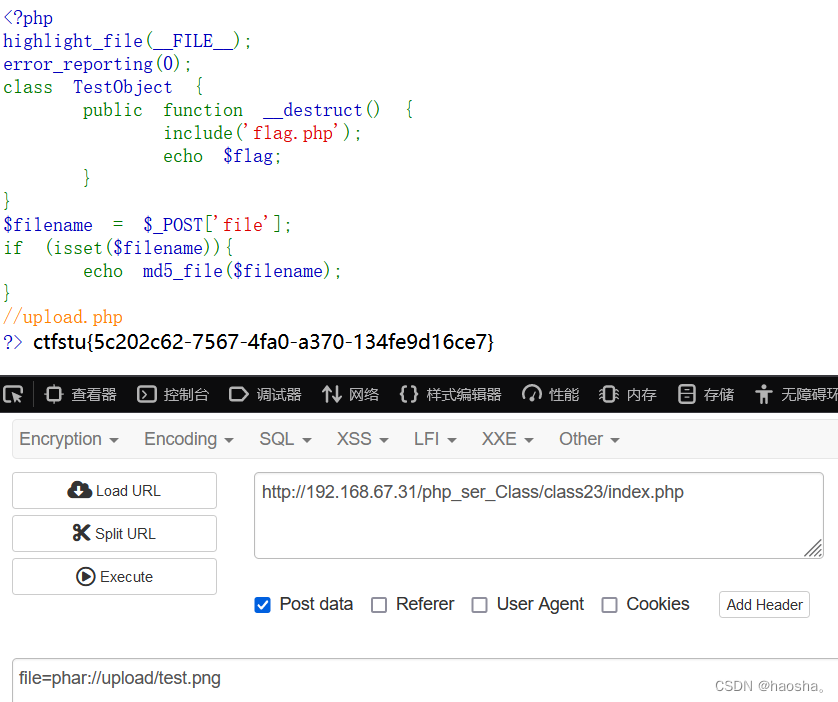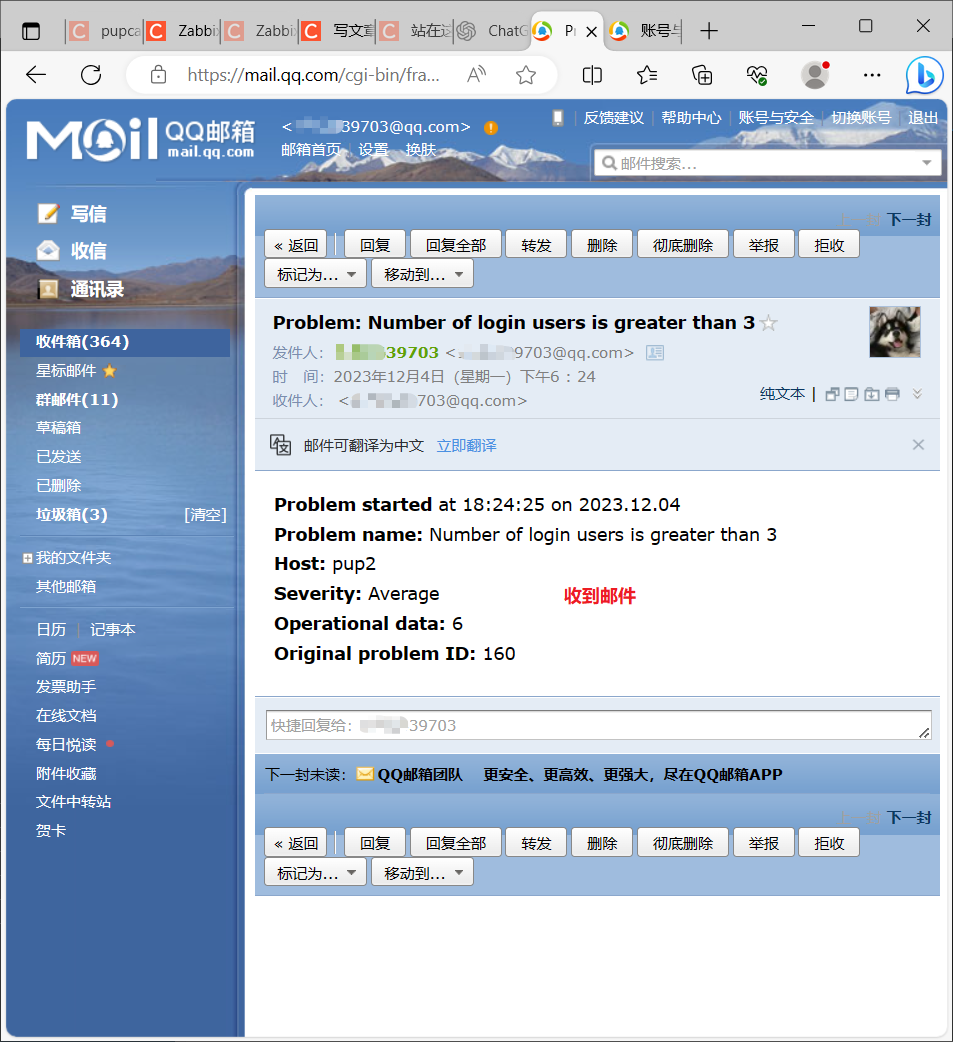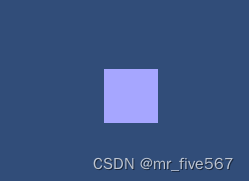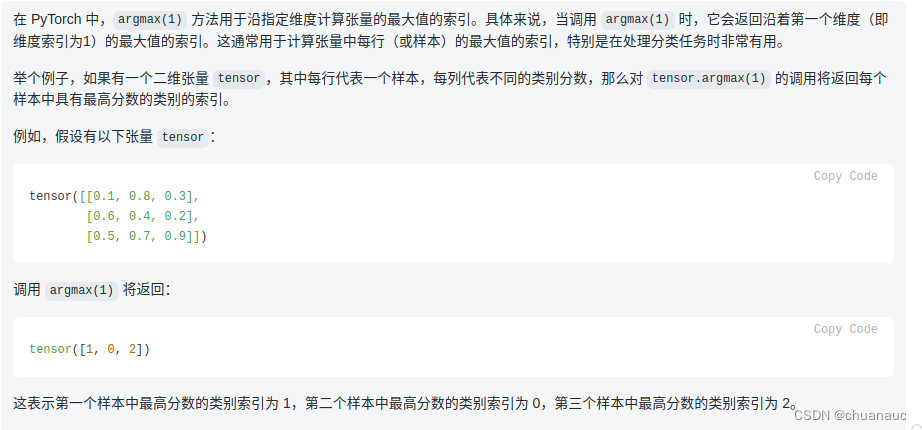#include <stdio.h>
typedef char ElemType;
#define StackSize 100 /*顺序栈的初始分配空间*/
typedef struct
{
ElemType data[StackSize]; /*保存栈中元素*/
int top; /*栈顶指针*/
} SqStack;
void InitStack(SqStack &st)
{
st.top=-1;
}
int Push(SqStack &st,ElemType x) /*进栈运算*/
{
if (st.top==StackSize-1) /*栈满*/
return 0;
else /*栈不满*/
{
st.top++;
st.data[st.top]=x;
return 1;
}
}
int Pop(SqStack &st,ElemType &x) /*出栈运算*/
{
if (st.top==-1) /*栈空*/
return 0;
else /*栈不空*/
{
x=st.data[st.top];
st.top--;
return 1;
}
}
int GetTop(SqStack st,ElemType &x) /*取栈顶元素*/
{
if (st.top==-1) /*栈空*/
return 0;
else
{
x=st.data[st.top];
return 1;
}
}
int StackEmpty(SqStack st) /*判断栈空运算*/
{
if (st.top==-1) /*栈空*/
return 1;
else /*栈不空*/
return 0;
}
int printStack(SqStack S)
{
if (S.top == -1)//当栈顶指针指向-1,说明栈空,无栈元素可供打印
{
return 0;
}
int i = 0; //计数器,记录当前是第几个元素
while (S.top!= -1)
{
i++; //栈顶指针还未到-1,则说明当前栈顶指针有元素,计数器+1
printf("栈顶向下第%d个元素为:%c\n", i, S.data[S.top]); //当前栈顶指针的元素打印出
S.top--; //栈顶指针向下走一格,继续进行循环打印
}
return 1;
}
int main()
{ SqStack st;
ElemType e;
InitStack(st);
printf("栈%s\n",(StackEmpty(st)==1?"空":"不空"));
printf("a进栈\n");Push(st,'a');
printf("b进栈\n");Push(st,'b');
printf("c进栈\n");Push(st,'c');
printf("d进栈\n");Push(st,'d');
printf("栈%s\n",(StackEmpty(st)==1?"空":"不空"));
GetTop(st,e);
printf("栈顶元素:%c\n",e);
printf("出栈次序:\n");
printStack(st);
printf("栈%s\n",(StackEmpty(st)==1?"空":"不空"));
printf("清空栈操作\n");
InitStack(st);
printf("栈%s\n",(StackEmpty(st)==1?"空":"不空"));
printf("\n");
}运行结果: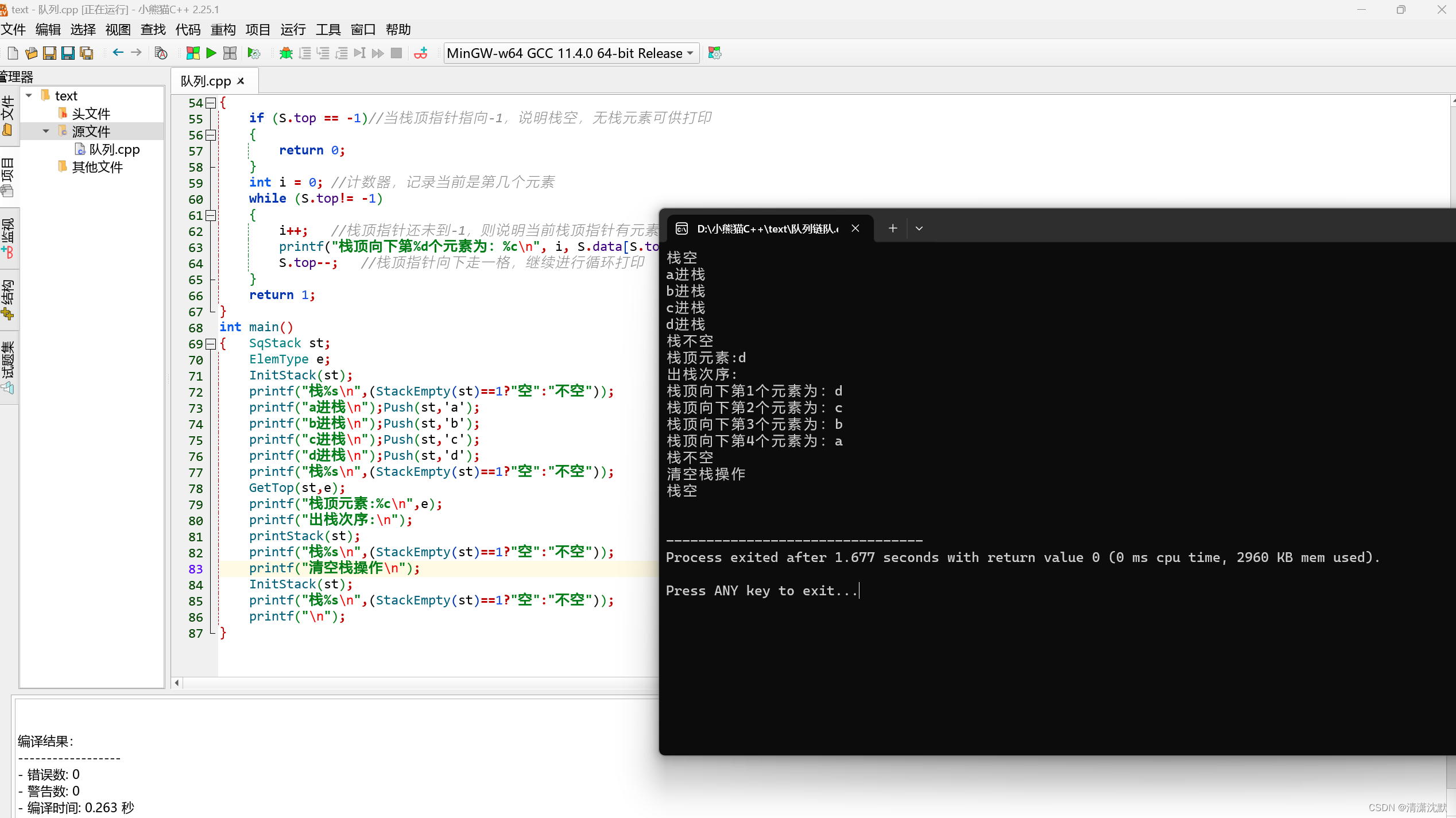
我这用的小熊猫C++实现的,此软件我感觉用来打C++的代码还挺不错的!哈哈,你们也可以用其他软件,应该都能行。
跟我上一篇文章里解释差不多,这窝就不做过多解释了,如有不懂,可以去看看我的上一篇用C语言实现。两者其实区别不是很大,也可以留言!当然还是的注意指针(这个是真的烦,哈哈)


